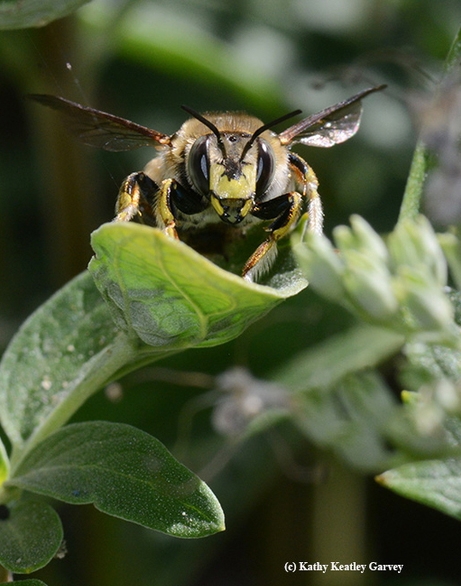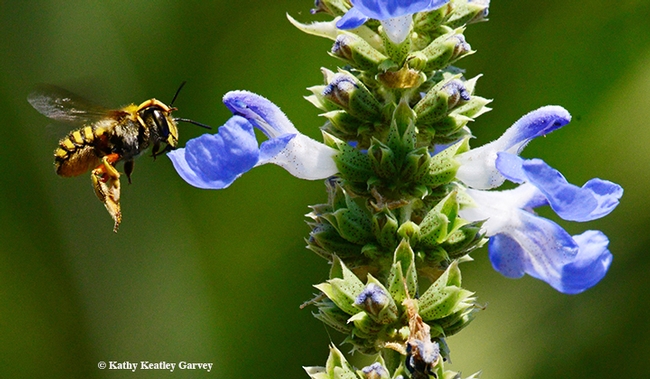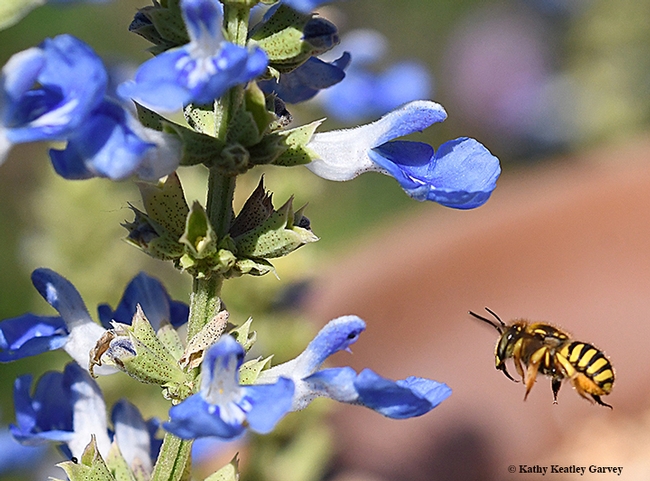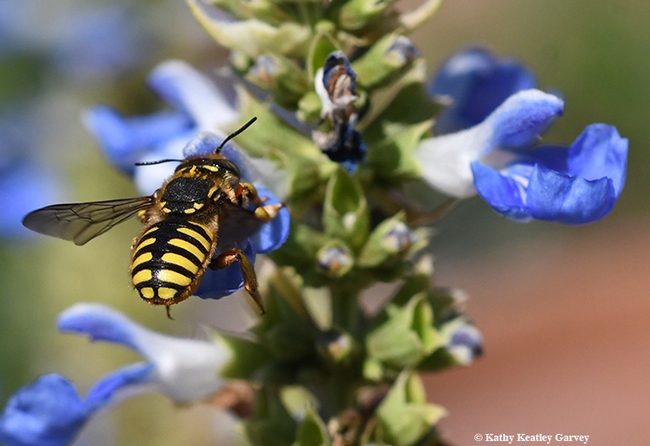
Ever seen the male European wool carder bee (Anthidium manicatum) protecting its turf?
It's "no-holds barred" on our blue spike sage (Salvia uliginosa) and frankly, it's a delight to see and photograph.
The highly territorial male body-slams all floral visitors, including honey bees, bumble bees, carpenter bees and butterflies that are trying to seek a little nectar, too.
The wool carder bee (so named because the female scrapes or cards leaf fuzz for her nest) is an Old World bee belonging to the family Megachilidae (which also includes leafcutter and mason bees, among others). Accidentally introduced into the United States from Europe, this pollinator was first discovered in New York State in 1963, and then spread across the continent. Scientists found it in Davis, Calif. in 2007.
In size, wool carder bees are comparable to honey bees. They're readily distinguished, however, by their striking yellow markings on their black abdomens, and yellow faces. Males are considerably larger than females, and have a spine on either side of the last two abdominal segments and three spines on the last segment, according to Lynn Kimsey, director of the Bohart Museum of Entomology and professor of entomology at UC Davis. Those spines have been mistaken for stingers, but only females have stingers.
One thing's for sure: their highly aggressive behavior tends to make honey bees forage faster! They don't want to get bonked! (Davis insect photographer Allan Jones aptly calls them "bonker bees.")
In our little pollinator garden in Vacaville, Calif., European wool carder bees seem to prefer blue flowers, especially our blue spike sage.
In fact, noted entomologist George Eickwort, writing in 1980 in the journal Psyche, observed that they seem to prefer "blue flowers with a relatively long throat."
We've seen the male carder bees protect patches of lamb's ear, foxgloves, catmint, oregano, cosmos, African blue basil, and Mexican sunflower (Tithonia).
However, they seem to go "bonkers" over bluebeard (Caryopteris x clandonensis) and blue spike sage (Salvia uliginosa).
A blue plate special...
Attached Images:

European wool carder bee, Anthidium manicatum, heads toward a blue spike sage, Salvia uliginosa. (Photo by Kathy Keatley Garvey)

The European wool carder bee, an Old World bee, seems to prefer blue flowers with a long throat. This is blue spike sage, Salvia uliginosa, a native of Brazil. (Photo by Kathy Keatley Garvey)

Two European wool carder bees in the process of giving the world more wool carder bees. (Photo by Kathy Keatley Garvey)